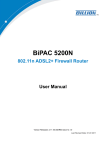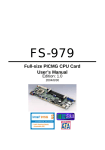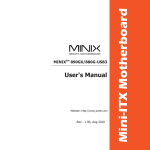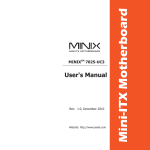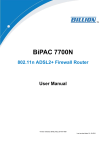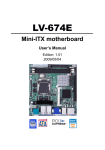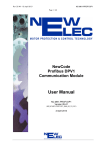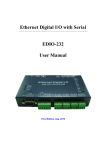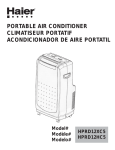Download User's Manual G31 Series
Transcript
G31 Series G31+ICH7 Chipset Socket LGA755 Processor Mainboard User’s Manual Rev: 1.3, Nov 2007 P/N: 88ENG31A03 Disclaimer The intellectual property of this manual belongs to our company. The ownership of all of the products, including accessories and software etc. belong to our company. No one is permitted to copy, change, or translate without our written permission. We compiled this manual based on our careful attitude, but we can not guarantee the accuracy of the contents. This manual is purely technical documentation, without any hint or other meanings, and we won't commit users' misunderstanding of the typesetting error. Our products are in continuous improvement and updating, Therefore, we retain the right that we won't give notice to the users in future. Copyright All of the trademark in this manual belong to their own registered company. All of the products name is only for identification, its title belongs to its manufacturer or brand owner. Table of Contents Chapter 1 Introduction ........................................................................................... 3 1.1 Package Checklist ............................................................................................................... 3 1.2 Specifications ...................................................................................................................... 4 1.3 Mainboard Layout ............................................................................................................... 6 1.4 Connecting Rear Panel I/O Devices ............................................................................. 8 Chapter 2 Hardware Setup ...................................................................................... 9 2.1 Choosing a Computer Chassis .............................................................................................. 9 2.2 Installing Mainboard ............................................................................................................ 9 2.3 Installation of the CPU and CPU Cooler................................................................................10 2.3.1 Installation of the CPU ............................................................................................................ 10 2.3.2 Installation of the CPU Cooler .................................................................................................. 10 2.4 Installation of Memory Modules............................................................................................ 11 2.5 Connecting Peripheral Devices............................................................................................. 12 2.5.1 Floppy and IDE Disk Drive Connectors ...................................................................................... 12 2.5.2 Serial ATA Connectors ............................................................................................................. 12 2.5.3 PCI and PCI Express slots ........................................................................................................ 12 Chapter 3 Jumpers & Headers Setup .................................................................... 13 3.1 Checking Jumper Settings .................................................................................................. 13 3.2 CMOS Memory Clearing Header .......................................................................................... 13 3.3 Keyboard Power Function ................................................................................................... 13 3.4 FAN Power Connectors ....................................................................................................... 14 3.5 Front Panel Switches & Indicators Headers ..........................................................................14 3.6 Additional USB Port Headers ...............................................................................................15 3.7 Front Panel Audio Connection Header....................................................................................15 3.8 Serial Port Header .............................................................................................................. 16 3.9 IR Connection Header ........................................................................................................ 16 3.10 Internal Audio Connectors .................................................................................................17 3.11 ATX Power Input Connectors .............................................................................................17 Chapter 4 BIOS Setup Utility ................................................................................. 18 4.1 About BIOS Setup ............................................................................................................. 18 4.2 To Run BIOS Setup ........................................................................................................... 18 4.3 About CMOS...................................................................................................................... 18 4.4 The POST (Power On Self Test)........................................................................................... 18 4.5 BIOS Setup — CMOS Setup Utility....................................................................................... 19 4.5.1 CMOS Setup Utility ................................................................................................................ 19 4.5.2 Control Keys ........................................................................................................................ 20 4.5.3 Standard BIOS Features ....................................................................................................... 21 4.5.4 Advanced BIOS Features ....................................................................................................... 22 4.5.5 Advanced Chipset Features .................................................................................................... 23 4.5.6 PCI/PNP Resource Management............................................................................................... 24 4.5.7 Boot configuration Features..................................................................................................... 25 4.5.8 Power Management Features ................................................................................................. 25 4.5.9 BIOS Security Features .......................................................................................................... 26 4.5.10 Load Optimized Defaults.... .................................................................................................. 27 4.5.11 Load FailSafe Defaults ......................................................................................................... 27 4.5.12 Discard Changes.................................................................................................................. 27 4.5.13 Save Changes and Exit......................................................................................................... 28 4.5.14 Discard Changes and Exit..................................................................................................... 28 Chapter 5 Driver Installation ................................................................................ 29 APPENDIX 1 ............................................................................................................. 31 G31 Series User's Manual Chapter 1 Introduction 1.1 Package Checklist Thank you for choosing our product. Please check the following packing and accessories, if there is any broken or part missing, please contact with your franchiser. • • • • • • • HDD Cable X 1 Serial ATA Cable X 1 Rear I/O Panel X 1 User's Manual X 1 Driver/Utility CD X 1 Serial ATA Power Cable X 1 FDD Cable X 1 The items listed above are for reference only, and are subject to change without notice. -- G31 Series User's Manual 1.2 Specifications-1 (for JW-IG31-MX) - LGA775 socket for Intel® Core™2 Extreme/ Core™2 Quad/ Core™ 2 Duo/ Pentium® Dual Core/ Pentium® D/Pentium® 4 (800MHz CPU FSB)/ Celeron® (Conroe-L) Processors - FSB 1333MHZ/1066MHz/800MHz/ - Hyper Threading Technology - Based on G31 + ICH7 Main Chipset - ICH7: Intel FW82801GB Graphics - Intel Graphics Media Accelerator 3100 - 2 x 240-pin DIMM slots support Main Memory - Maximum memory capacity up to 4GB - Supports Dual Channel DDRII 667/800MHz - Supports Plug&Play - Supports BIOS ROM Write Protect BIOS - Supports Advanced Power Management ACPI,STR (S3 Optional) - Supports 1x SYS FAN, 1x CPU FAN - CPU temperature, Fan speed, System Voltage monitoring I/O Chipset - Onboard Winbond W83627 - 1 x PS/2 Keyboard port - 1 x PS/2 Mouse port - 1 x VGA port - 1 x Debug LED (Optional) - 1 x SPDIF IN, 1 x SPDIF Out port (Optional) - 1 x RJ45 port Integrated Ports - 8 x USB 2.0 ports, USB 1.1 is compliant - 1 x eSATA port - 1 x IR port (optional) - 4 x SATA ports by ICH7 , Maximum Speed to 3GB/s - 1 x IDE connector, 2 x IDE devices could be connected, Supports ATA 66/100 - 1 x Floppy Drive, supports 360K/720K/1.2M/1.44M/2.88M floppy disk - Onboard ALC883 Chipset - Supports 6/8 channel HD Audio,24 bit Audio Codec Sound - Positioning Audio Support A3D, I3DL2 - Front Panel Jumper, provides stereo MIC port on front panel Onboard LAN - Onboard Marwell 88E8056 - 1 x PCI Express x16 slot Expansion Slots - 2 x PCI slots - Support PCI Bus interface v2.2 compliant Form Factor - Mirco ATX (208*243.8 mm) -- G31 Series User's Manual 1.2 Specifications-2 (for JW-IG31-AR/CF) - LGA775 socket for Intel® Core™2 Extreme/ Core™2 Quad/ Core™ 2 Duo/ Pentium® Dual Core/ Pentium® D/Pentium® 4 (800MHz CPU FSB)/ Celeron® (Conroe-L) Processors - FSB 1333MHZ/1066MHz/800MHz/ - Hyper Threading Technology - Based on G31 + ICH7 Main Chipset - ICH7: Intel FW82801GB Graphics - Intel Graphics Media Accelerator 3100 - 2 x 240-pin DIMM slots support Main Memory - Maximum memory capacity up to 4GB - Supports Dual Channel DDRII 667/800MHz - Supports Plug&Play - Supports BIOS ROM Write Protect BIOS - Supports Advanced Power Management ACPI,STR (S3 Function) - Supports 2x SYS FAN, 1x CPU FAN - CPU temperature, Fan speed, System Voltage monitoring I/O Chipset - Onboard Winbond W83627 - 1 x PS/2 Keyboard port - 1 x PS/2 Mouse port - 1 x VGA port - 1 x Debug LED (Optional) - 1 x SPDIF IN/Out port (Optional) - 1 x RJ45 port Integrated Ports - 8 x USB 2.0 ports, USB 1.1 is compliant - 1 x eSATA port - 1 x IR port (optional) - 4 x SATA ports by ICH7, Maximum Speed to 3GB/s - 1 x IDE connector, 2 x IDE devices could be connected, Supports ATA 66/100 - 1 x Floppy Drive, supports 360K/720K/1.2M/1.44M/2.88M floppy disk - Onboard ALC888 Chipset - Supports 6/8 channel HD Audio, 24 bit Audio Codec Sound - Positioning Audio Support A3D, I3DL2 - Front Panel Jumper, provides stereo MIC port on front panel Onboard LAN - Onboard Realtek RTL8810S/SC - 2 x PCI Express x16 slot (Including one x16 slot, another running at x4 speed) Expansion Slots - 1 x PCI Express x1 slot - 3 x PCI slots - Support PCI Bus interface v2.2 compliant Form Factor - ATX (199.9*304.8 mm) -- G31 Series User's Manual 1.3 Mainboard Layout - 1 (PCB Layout for JW-IG31-MX) (Optional) (This picture is only for reference) -- G31 Series User's Manual 1.3 Mainboard Layout - 2 (PCB Layout for JW-IG31-AR/CF) 1 JDDR1 SFAN2 VGA SFAN1 (This picture is only for reference) -- G31 Series User's Manual 1.4 Connecting Rear Panel I/O Devices The rear I/O part of these mainboard provides the following I/O ports: (Optional) (Optional) (Optional) Debug LED VGA (Optional) (This picture is only for reference) • PS/2 Mouse: Connect to PS/2 mouse. • PS/2 Keyboard: Connect to PS/2 keyboard. • Debug LED: Display error code. (please reference attached 1) • VGA: Connect to monitor input. • eSATA: Connect to peripherial SATA devices.The peripherial SATA devices must connect inside SATA connectors. • SPDIF OUT: Connect to digital audio device. • LAN: Connect to Local Area Network. • USB: Connect to USB devices such as scanner, digital speakers, monitor, mouse, keyboard, hub, digital camera, joystick etc. • AUDIO1: Cen./Sub. (Center / Subwoofer): Connect to the center and subwoofer channel in the 7.1 channel audio system. R.L./R.R. (Rear Left / Rear Right): Connect to the rear left and rear right channel in the 7.1 channel audio system. S.L./S.R. (Surround Left / Surround Right): Connect to the surround left and surround right channel in the 7.1 channel audio system. Line-In: Connect to the line out from external audio sources. Line-Out: Connect to the front left and front right channel in the 7.1-channel or regular 2-channel audio system. Mic-In: Connect to the plug from external microphone. -- G31 Series User's Manual Chapter 2 Hardware Setup 2.1 Choosing a Computer Chassis The mainboard and its component layouts illustrated in this chapter were based mainly on model “ JW-IG31-MX”, unless specifically stated. • Choose a chassis big enough to install this mainboard. • As some features for this mainboard are implemented by cabling connectors on the mainboard to indicators and switches or buttons on the chassis, make sure your chassis supports all the features required. • If there is possibility of adopting some more hard drives, make sure your chassis has sufficient power and space for them. • Most chassis have alternatives for I/O shield located at the rear panel. Make sure the I/O shield of the chassis matches the I/O port configuration of this mainboard. You can find an I/O shield specifically designed for this mainboard in its package. 2.2 Installing Mainboard Most computer chassis have a base with many mounting holes to allow the mainboard to be securely attached, and at the same time, prevent the system from short circuits. There are two ways to attach the mainboard to the chassis base: (1) with studs, or (2) with spacers. Basically, the best way to attach the board is with studs. Only if you are unable to do this should you attach the board with spacers. Line up the holes on the board with the mounting holes on the chassis. If the holes line up and there are screw holes, you can attach the board with studs. If the holes line up and there are only slots, you can only attach with spacers. Take the tip of the spacers and insert them into the slots. After doing this to all the slots, you can slide the board into position aligned with slots. After the board has been positioned, check to make sure everything is OK before putting the chassis back on. Always power off the computer and unplug the AC power cord before adding or removing any peripheral or component. Failing to do so may cause severe damage to your mainboard and/or peripherals. Plug in the AC power cord only after you have carefully checked everything. To install this mainboard: 1. Locate all the screw holes on the mainboard and the chassis base. 2. Place all the studs or spacers needed on the chassis base and have them tightened. 3. Face the mainboard’s I/O ports toward the chassis’s rear panel. 4. Line up all the mainboard’s screw holes with those studs or spacers on the chassis. 5. Install the mainboard with screws and have them tightened. To prevent shorting the PCB circuit, please REMOVE the metal studs or spacers if they are already fastened on the chassis base and are without mounting-holes on the mainboard to align with. -- G31 Series User's Manual 2.3 Installation of the CPU and CPU Cooler Before installing the CPU, please comply with the following conditions: 1. Please make sure that the mainboard supports the CPU. 2. Please take note of the one indented corner of the CPU. If you install the CPU in the wrong direction, the CPU will not insert properly. If this occurs, please change the insert direction of the CPU. 3. Please add an even layer of heat sink paste between the CPU and CPU cooler. 4. Please make sure the CPU cooler is installed on the CPU prior to system use, otherwise overheating and permanent damage of the CPU may occur. 5. Please set the CPU host frequency in accordance with the processor specifications. It is not recommended that the system bus frequency be set beyond hardware specifications since it does not meet the required standards for the peripherals. If you wish to set the frequency beyond the proper specifications, please do so according to your hardware specifications including the CPU, graphics card, memory, hard drive, etc. 2.3.1 Installation of the CPU 1. Open the socket lever by pushing the lever down and away from the socket (see Figure 1, 1 and 2). 2. Lift the load plate. Do not touch the socket contacts (see Figure 2, 3 and 4) 1 2 3. Remove the plastic protective socket cover from the load plate (see Figure 3, 5). Do not discard the protective socket cover. Always replace the socket cover if the processor is removed from the socket. Figure 3 5 Figure 1 4. Remove the processor from the protective processor cover. Hold the processor only at the edges, being careful not to touch the bottom of the processor (see Figure 4). Do not discard the protective processor cover. Always replace the processor back to the package if the processor is removed from the socket. 6. Pressing down on the load plate (Figure 6, 9) close and engage the socket lever (Figure 6, 10). Figure 2 5. Hold the processor with your thumb and index fingers oriented as shown in Figure 5. Make sure fingers align to the socket cutouts (see Figure 5, 6). Align notches (see Figure 5, 7) with the socket see (Figure 5, 8). Lower the processor straight down without tilting or sliding the processor in the socket. Figure 4 10 Figure 6 7 7 8 9 Figure 5 - 10 - 8 6 6 G31 Series User's Manual 2.3.2 Installation of the CPU Cooler For proper installation, please kindly refer to the instruction manuals of your CPU Cooler. 2.4 Installation of Memory Modules This mainboard provides two 240-pin DDRII (Double Data Rate) DIMM slots, and supports Dual Channel Memory Technology. For dual channel configuration, you always need to install two identical (the same brand, speed, size and chip-type) memory modules in the DDRII DIMM slots to activate Dual Channel Memory Technology. Otherwise, it will operate at single channel mode. To reach the performance of Dual Channel DDR2, the following rules must be obeyed: For 2-DIMM dual-channel installation: Populate DIMM modules of the same type and size on slots [DIMM1]+[DIMM2]. Static electricity can damage the electronic components of the computer or optional boards. Before starting these procedures, ensure that you are discharged of static electricity by touching a grounded metal object briefly. To install system memory: 1. Power off the computer and unplug the AC power cord before installing or removing memory modules. 2. Locate the DIMM slot on the board. 3. Hold two edges of the DIMM module carefully, keep away from touching its connectors. 4. Align the notch key on the module with the rib on the slot. 5. Firmly press the module into the slots until the ejector tabs at both sides of the slot automatically snap into the mounting notch. Do not force the DIMM module in with extra force as the DIMM module only fits in one direction. 6. To remove the DIMM modules, push the two ejector tabs on the slot outward simultaneously, and then pull out the DIMM module. - 11 - G31 Series User's Manual 2.5 Connecting Peripheral Devices 2.5.1 Floppy and IDE Disk Drive Connectors Each of the IDE port connects up to two IDE drives at Ultra ATA 66/100 mode by one 40-pin, 80-conductor,and 3-connector Ultra ATA/66 ribbon cables. Connect the single end (blue connector) at the longer length of ribbon cable to the IDE port of this board, the other two ends (gray and black connector) at the shorter length of the ribbon cable to the connectors of your hard drives. Make sure to configure the “Master” and “Slave” relation before connecting two drives by one single ribbon cable. The red line on the ribbon cable must be aligned with pin-1 on both the IDE port and the hard-drive connector. The FDD connector connects up to two floppy drives with a 34-wire, 2-connector floppy cable.Connect the single end at the longer length of ribbon cable to the FDD on the board, the two connectors on the other end to the floppy disk drives connector. Generally you need only one floppy disk drive in your system. The red line on the ribbon cable must be aligned with pin-1 on both the FDD port and the floppy connector. 2.5.2 Serial ATA Connectors Each SATA connector serves as one single channel to connect one SATA device by SATA cable. SATA4 SATA3 SATA1 SATA2 • eSATA: Connect to peripherial SATA devices.The peripherial SATA devices must connect inside SATA connectors. (Optional) 2.5.3 PCI and PCI Express slots Install PCI Express X16 graphics card into slot “PCIE1”. Install PCI card into slots “PCI1” or “PCI2” . - 12 - G31 Series User's Manual Chapter 3 Jumpers & Headers Setup 3.1 Checking Jumper Settings • For a 2-pin jumper, plug the jumper cap on both pins will make it CLOSE (SHORT). Remove the jumper cap, or plug it on either pin (reserved for future use) will leave it at OPEN position. • For 3-pin jumper, pin 1~2 or pin 2~3 can be shorted by plugging the jumper cap in. How to identify the PIN1 jumpers? Please check the mainboard carefully, the PIN1 is marked by "1" or white thick line. 3.2 CMOS Memory Clearing Header The time to clear the CMOS memory occurs when (a) the CMOS data becomes corrupted, (b) you forgot the supervisor or user password preset in the BIOS menu, (c) you are unable to boot-up the system because the CPU ratio/clock was incorrectly set in the BIOS menu, or (d) whenever there is modification on the CPU or memory modules. This header uses a jumper cap to clear the CMOS memory and have it reconfigured to the default values stored in BIOS. • Pins 1 and 2 shorted (Default): Normal operation. • Pins 2 and 3 shorted: Clear CMOS memory. To clear the CMOS memory and load in the default values: 1. Power off the system. 2. Set pin 2 and pin 3 shorted by the jumper cap. Wait for a few seconds. Set the jumper cap back to its default settings --- pin 1 and pin 2 shorted. 3. Power on the system. 4. For incorrect CPU ratio/clock settings in the BIOS, press <Del> key to enter the BIOS setup menu right after powering on system. 5. Set the CPU operating speed back to its default or an appropriate value. 6. Save and exit the BIOS setup menu. 3.3 Keyboard Power Function(JKB) Pin 1-2 short: Disabled power on by keyboard Pin 2-3 short: Support power on by keyboard JKB: - 13 - G31 Series User's Manual 3.4 FAN Power Connectors These connectors each provide power to the cooling fans installed in your system. CFAN or CFAN1: CPU Fan Power Connector SYSFAN1: System Fan Power Connector SYSFAN2: System Fan Power Connector (Optional) SFAN1 SFAN2 CFAN or CFAN1 These fan connectors are not jumpers. DO NOT place jumper caps on these connectors. 3.5 Front Panel Switches & Indicators Headers 1 JDDR1 1-2 2-3 DDR Voltage Default 1.9V SPEAKER HDD_LED (Hard Driver LED Header) Connect the HDD LED cable to these PINs, in order to see the HDD status RESET (Reset Control) This connector connects to the case-mounted reset switch for rebooting your computer without having to turn off your power switch. This is a preferred method of rebooting in order to prolong the lift of the system’s power supply. PWR-ON (Power Button) This connector connects to the case-mounted power switch to power ON/OFF the system. SPEAKER (Speaker) This 4-pin connector connects to the case-mounted speaker. You should follow the instruction of the speaker cable. - 14 - G31 Series User's Manual 3.6 Additional USB Port Headers Pin Assignment Pin Pin Assignment 1 3 VCC Data 0- 2 4 VCC Data 0- 5 Data 0+ 6 Data 0+ 7 9 Ground No Pin 8 10 Ground NC 1 2 , FUSB1 FUSB2 9 10 Pin 3.7 Front Panel Audio Connection Header HD Audio: Pin No. 1 2 3 4 - 15 - Definition MIC2_L AGND MIC2_R NC 5 6 7 OUT_R MIC2_JD SENSE 8 No Pin 9 10 OUT_L OUT_JD G31 Series User's Manual 3.8 Serial Port Header This JCOM1 header supports a serial port module. Pin Pin Assignment Pin Pin Assignment 1 3 DCD TXD 2 4 RXD DTR 5 GND 6 DSR 7 9 RTS RI 8 CTS 3.9 IR Connection Header Connect the IrDA cable (if available) to this IR connector. Pin No. 1 2 3 4 5 - 16 - Definition VCC NC IRRX GND IRTX G31 Series User's Manual 3.10 Internal Audio Connectors Connect CD-ROM or DVD-ROM audio out to the connector. Pin No. 1 2 3 4 Definition CD-L GND GND CD-R 3.11 ATX Power Input Connectors This mainboard provides two power connectors to connect power supplier. There are two ATX 12V connectors according to different Model, one is 4Pin,another is 8pin, followin pictures are for reference. 1.ATX 4Pin 2.ATX 8Pin - 17 - G31 Series User's Manual Chapter 4 BIOS Setup Utility BIOS stands for Basic Input and Output System. It was once called ROM BIOS when it was stored in a Read-Only Memory (ROM) chip. Now manufacturers would like to store BIOS in EEPROM which means Electrically Erasable Programmable Memory. BIOS used in this series of mainboard is stored in EEPROM, and is the first program to run when you turn on your computer. BIOS performs the following functions: 1. Initializing and testing hardware in your computer (a process called "POST", for Power On Self Test). 2. Loading and running your operating system. 3. Helping your operating system and application programs manage your PC hardware by means of a set of routines called BIOS Run-Time Service. 4.1 About BIOS Setup BIOS Setup is an interactive BIOS program that you need to run when: 1. Changing the hardware of your system. (For example: installing a new Hard Disk etc.) 2. Modifying the behavior of your computer. (For example: changing the system time or date, or turning special features on or off etc.) 3. Enhancing your computer's behavior. (For example: speeding up performance by turning on shadowing or cache) 4.2 To Run BIOS Setup First access BIOS setup menu by pressing <F1> key after “POST” is complete (before OS is loaded). After the first BIOS be setupped(or loaded default values) and save, the <DEL> key will be pressed if you will enter BIOS setup menu. 4.3 About CMOS CMOS is the memory maintained by a battery. CMOS is used to store the BIOS settings you have selected in BIOS Setup. CMOS also maintains the internal clock. Every time you turn on your computer, the BIOS Looks into CMOS for the settings you have selected and configures your computer accordingly. If the battery runs out of power, the CMOS data will be lost and POST will issue a “CMOS invalid” or “CMOS checksum invalid” message. If this happens, you have to replace the battery and check and configure the BIOS Setup for the new start. 4.4 The POST (Power On Self Test) POST is an acronym for Power On Self Test. This program will test all things the BIOS does before the operating system is started. Each of POST routines is assigned a POST code, a unique number which is sent to I/O port 080h before the routine is executed. - 18 - G31 Series User's Manual 4.5 BIOS Setup — CMOS Setup Utility • In order to increase system stability and performance, our engineering staff is constantly improving the BIOS menu. The BIOS setup screens and descriptions illustrated in this manual are for your reference only, and may not completely match with what you see on your screen. • Do not change the BIOS parameters unless you fully understand its function. 4.5.1 CMOS Setup Utility After powering up the system, the BIOS message appears on the screen,when the first time or when CMOS setting wrong, there is following message appears on the screen , but if the first BIOS be setuped(or loaded default values) and save, the <DEL> key will be pressed if you will enter BIOS setup menu. Press F1 to Run SETUP If this message disappears before you respond, restart the system by pressing <Ctrl> + <Alt>+ <Del> keys, or by pressing the reset button on computer chassis. Only when these two methods should be fail that you restart the system by powering it off and then back on. After pressing <F1> or <Del> key, the main menu appears. CMOS Setup Utility - Copyright (C) 1985-2004,American Megatrends,Inc. ►► Standard Standard BIOS BIOS Features Features ► BIOS Security Features ► Advanced BIOS Features Load Optimal Defaults ► Advanced Chipset Features Load Failsafe Defaults ► PCI/PNP Resource Management Discard Changes ► Boot Configuration Features Save Changes and Exit ► Power Management Features Discard Changes and Exit →←:Move Enter:Select +/-/:Value F10:Save ESC:Exit F1:General Help F7:Previous Values F8:Fail-Safe Defaults F9:Optimized Defaults ↑ ↓ Configure Time and Date. Display System Information... v0.258 (C)Copyright 1985-2005,American Megatrends, Inc. • Standard BIOS Features This setup page includes all the items in standard compatible BIOS. • Advanced BIOS Features This setup page includes all the items of AMI special enhanced features. • Advanced Chipset Features This setup page includes the chipset features. • PCI/PNP Resource Management This setup page includes all the configurations of PCI & PNP resources. • Boot Configuration Features This setup page includes the configurations of Boot Settings. • Power Management Features This setup page includes all the items of Green function features. - 19 - G31 Series User's Manual • BIOS Security Features Change, set, or disable password. It allows you to limit access to the system and Setup, or just to Setup. • Load Optimal Defaults Optimized Defaults indicates the value of the system parameters which the system would be in best performance configuration. • Load Failsafe Defaults Fail-Safe Defaults indicates the value of the system parameters which the system would be in safe configuration. • Discard Changes Abandon all CMOS value changes. • Save Changes and Exit Save CMOS value settings to CMOS and exit setup. • Discard Changes and Exit Abandon all CMOS value changes and exit setup. 4.5.2 Control Keys Press F1 to pop up a small help window that describes the appropriate keys to use and the possible selections for the highlighted item. Please check the following table for the function description of each control key. Control Key(s) ←/→ ↑/↓ +/ -/PU/PD <Enter> <ESC> <F1> <F2> <F5> <F7> <F8> <F9> <F10> Function Description Move cursor left or right to select Screens Move cursor up or down to select items To Change option for the selected items To bring up the selected screen Main Menu - Quit and not save changes into CMOS Status Page Setup Menu and Option Page Setup Menu - Exit current page and return to Main Menu General help Item Help Restore the previous CMOS value from CMOS, only for Option Page Setup Menu Discard Changes Load Failsafe Defaults Load Optimal Defaults Save configuration changes and exit setup - 20 - G31 Series User's Manual 4.5.3 Standard BIOS Features CMOS Setup Utility - Copyright (C) 1985-2004,American Megatrends, Inc Standard BIOS Features Item Help System Overview AMIBIOS Verision Buid Date ID Use [ENTER],[TAB] or [SHIFT-TAB] to select a field. :08.00.14 :09/18/07 :G310A008 Processor Genuine Intel (R) CPU Speed :2400MHz Count :1 @ 2.40GHz Use [+] or [-] to configure system Time. System Memory Size :512MB System Time System Date 04:57:25 [04:57:25] [Mon 09/24/2007] Language [English] →←:Move Enter:Select F7: Previous Values ↑ ↓ +/-/:Value F10:Save F8: Fail-Safe Defaults ESC:Exit F1:General Help F9: Optimized Defaults ・ AMIBIOS This is about AMIBIOS information, including BIOS verision buid date and ID number. ・ Processor This display CPU information which you used in your computer. ・ System Memory This display memory size which you used in your computer. ・ System Time (hh:mm:ss) This item sets the time you specify (usually the current time) in the format of [Hour], [Minute],and [Second]. ・ System Date (mm:dd:yy) This item sets the date you specify (usually the current date) in the format of [Month], [Date],and [Year]. - 21 - G31 Series User's Manual 4.5.4 Advanced BIOS Features CMOS Setup Utility - Copyright (C) 1985-2004,American Megatrends, Inc. Advanced BIOS Features Advanced Settings Item Help WARNING:Setting wrong values in below sections may cause system to malfunction. ► ► ► ► ► ► ► ► ► CPU Configuration IDE Configuration Froppy Configuration SuperIO Configuration Hardware Health Configure MPS Configure PCI Express Configuration Smbios Configuration USB Configuration →←:Move Enter:Select F7: Previous Values ↑ ↓ Press [Press [Press [Press [Press [Press [Press [Press [Press [Press Configuration CPU. Enter Enter] Enter] Enter] Enter] Enter] Enter] Enter] Enter] Enter] +/-/:Value F10:Save F8: Fail-Safe Defaults ESC:Exit F1:General Help F9: Optimized Defaults ► CPU Configuration Click <Press Enter> key to enter its submenu, it will be display configureted CPU information, including Module Version, Manufacturer , CPU type, Frequency, FSB Speed, Cache L1 , Cache L2 and so on. ► IDE Configuration Click <Press Enter> key to enter its submenu, it will be display IDE configuration, also you can set the ATA/IDE, SATA function from the options and set the IDE boot order, or set it as IDE Master, Slave within them. ► Floppy Configuration Click <Press Enter> key to enter its submenu, it will be display floppy configuration, and this item sets the type of floppy drives installed. ► SuperIO Configuration Click <Press Enter> key to enter its submenu, it will be display super IO configuration, and this item sets the function for onboard floppy controller, serial port address, parallel address, keybaord wakeup and mouse wakeup. ► Hardware Health Configure Click <Press Enter> key to enter its submenu, it will be display hardware health configuration, including System temperature, CPU temperature, FAN speed and all kinds of voltages. ► MPS Configuration Click <Press Enter> key to enter its submenu, it will be display MPS configuration, this item specfies which version of MPS (Multi-Processor Specification) this mainboard will use. Leave this item at its default setting. - 22 - G31 Series User's Manual ► PCI Express Configuration Click <Press Enter> key to enter its submenu, it will be display PCI express configuration, this item sets the active state for express PCI between disabled and enabled. ► Smbios Configuration Click <Press Enter> key to enter its submenu, it will be dispay Smbios configuration, this item sets SMBIOS Smi support for PnP function within the optional, between enabled and disabled. ► USB Configuration Click <Press Enter> key to enter its submenu, it will be display USB configuration, this item allows you to select USB function within the environment. 4.5.5 Advanced Chipset Features CMOS Setup Utility - Copyright (C) 1985-2004,American Megatrends,Inc. Advanced Chipset Features Advanced Chipset Settings Item Help WARNING:Setting wrong values in below sections may cause system to malfunction. ► ► ► Configure North Bridge features. Press Enter North Bridge Configuration [Press Enter] South Bridge Configuration [Press Enter] Colorful Magic Control [Press Enter] →←:Move Enter:Select F7: Previous Values ↑ ↓ +/-/:Value F10:Save F8: Fail-Safe Defaults ESC:Exit F1:General Help F9: Optimized Defaults ► North Bridge Configuration Click <Press Enter> key to enter its submenu, it will be display north bridge chipset configuration, this item sets the memory remap feature, DRAM frequency, DRAM timing by SPD, memory hole, initate graphic adapter, internal graphics mode select and PEG port selection. ► South Bridge Configuration Click <Press Enter> key to enter its submenu, it will be dispay south bridge chipset configuration, this item sets USB functions, audio controller, PCIE ports selection. ► Colorful Magic Control Click <Press Enter> key to enter its submenu, it will be display voltage configuration and clock configuration, the CPUvore and Memoryvcore will automatic on the screen, also, the CPU Voltage and Memory voltage can be set according to your selection; the clock configuration sets the PCIE LAN, BIOS write protect function. - 23 - G31 Series User's Manual 4.5.6 PCI/PNP Resource Management CMOS Setup Utility - Copyright (C) 1985-2004,American Megatrends,Inc. PCI/PNP Resource Management Advanced PCI/Pnp Settings Item Help WARNING:Setting wrong values in below sections may cause system to malfunction. Clear NVRAM Plug & Play O/S PCI Latency Timer Allocate IRQ to PCI VGA Palette Snooping PCI IDE BusMaster OffBoard PCI/ISA IDE Card [No] No [No] [64] [Yes] [Disabled] [Enabled] [Auto] IRQ3 IRQ4 IRQ5 IRQ7 IRQ9 IRQ10 ..... [Available] [Available] [Available] [Available] [Available] [Available] ..... →←:Move Enter:Select F7: Previous Values ↑ ↓ +/-/:Value F10:Save F8: Fail-Safe Defaults Clear NVRAM during System Boot. ESC:Exit F1:General Help F9: Optimized Defaults ・ Clear NVRAM This item for clearing NVRAM during system boot. ・ Plug & Play O/S This item lets the BIOS configure all the devices in the system or lets the operating system configure plug and play (PnP) devices not required for boot if your system has a Plug and Play operating system. ・ PCI Latency Time This item sets value in units of PCI clocks for PCI device latency timer register. ・ Allocate IRQ to PCI VGA This item assigns IRQ to PCI VGA card if card requests IRQ or doesn't assign IRQ to PCI VGA card even if card requests an IRQ. ・ Palette Snooping This item informs the PCI devices that an ISA graphics device is installed in the system so the card will function correctly. ・ PCI IDE BusMaster This item uses PCI busmastering for BIOS reading / writing to IDE derives. ・ OffBoard PCI/ISA IDE Card This item works for most PCI IDE cards, some PCI IDE cards may require this to be set to the PCI slot number that is holding the card. - 24 - G31 Series User's Manual ・ IRQ3/4/5/6/7/9/10/11/14/15 This specified IRQ is available to be used by PCI/PnP devices or reserved for use by Legacy ISA devices. ・ DMA Channel 0/1/3/5/6/7 This specified DMA is available to be used by PCI/PnP devices or reserved for use by Legacy ISA devices. ・ Reserved Memory Size This item is for size of memory block to reserve for legacy ISA devices. 4.5.7 Boot Configuration Features CMOS Setup Utility - Copyright (C) 1985-2004,American Megatrends,Inc. Boot Configuration Features Boot Settings Item Help Please Enter ] ► Boot Settings Configuration [Press →←:Move Enter:Select F7: Previous Values ↑ ↓ +/-/:Value F10:Save F8: Fail-Safe Defaults Configure Settings during System Boot. ESC:Exit F1:General Help F9: Optimized Defaults ► Boot Settings Configuration Click <Press Enter> key to enter its submenu, it will be display boot setting configuration, and the all functions allow BIOS to skip certain tests while booting, whether displays normal POST messages or OEM Logo instead of POST messages through sets the Quit Boot. 4.5.8 Power Management Features CMOS Setup Utility - Copyright (C) 1985-2004,American Megatrends,Inc. Power Management Features Power Management Features ► ► APM Configuration ACPI Configuration →←:Move Enter:Select F7: Previous Values ↑ ↓ Item Help [Press Press Enter ] [Press Enter ] +/-/:Value F10:Save F8: Fail-Safe Defaults - 25 - Section for Advanced APM Configuration. ESC:Exit F1:General Help F9: Optimized Defaults G31 Series User's Manual ► APM Configuration This item allows you to set Power Management/APM between Enable or disable, Power down video in suspend or standy Mode, Power down hard disk in suspend or standby mode, Go into suspend in the specified time, Select the Duty Cycle in Throttle mode, Monitor KBC ports 60/6 and go into On/Off, or suspend when power button is pressed. ► ACPI Configuration This item allows you to select ACPI Suspend Type (S3 mode is optional ) and allows you to set or Enabled / Disabled the Advanced configuration. 4.5.9 BIOS Secturity Features CMOS Setup Utility - Copyright (C) 1985-2004,American Megatrends, Inc. BIOS Secturity Features Security Settings Item Help Supervisor Password : Not User Password : Not Installed Installed Install or Change the password. Change Supervisor Password [Press Press Enter ] Change User Password [Press Enter ] →←:Move Enter:Select F7: Previous Values ↑ ↓ +/-/:Value F10:Save F8: Fail-Safe Defaults ESC:Exit F1:General Help F9: Optimized Defaults When Chage Supervisor/User Password function is selected, the following message appears at the center of the screen to assist you in creating a password. Enter New Password: Type the password, up to eight characters, and press <Enter>. The password typed now will clear any previously entered password from CMOS memory. You will be asked to confirm the password. Type the password again and press <Enter>. Enter New Password: Note: Don’t forget your password. If you forget the password, you will have to open the computer case and clear all information in the CMOS before you can start up the system. But by doing this, you will have to reset all previously set options. You may also press <Esc> to abort the selection. - 26 - G31 Series User's Manual 4.5.10 Load Optimized Defaults This option opens a dialog box that let you install optimized defaults for all appropriate items in the Setup Utility. Select <OK> and then <Enter> to install the defaults. select <Cancel> and then <Enter> to not install the defaults. The optimized defaults place demand on the system that may be greater than the performance level of the components, such as the CPU and the memory. You can cause fatal errors or instability if you install the optimized defaults when your hardware does not support them. If you only want to install setup defaults for a specific option, select and display that option, and then press <F9>. Load Optimal Defaults? [OK] [Cancel] 4.5.11 Load Failsafe Defaults This option opens a dialog box that lets you install fail-safe defaults for all appropriate items in the Setup Utility: Select <Ok> and the <Enter> to install the defaults. Select<Canel> and then <Enter> to not install the defaults. The fail-safe defaults place no great demand on the system and are generally stable. If your system is not functioning correctly, try installing the fail-safe defaults as a first step in getting your system working properly again. If you only want to install fail-safe defaults for a specific option, select and display that option, and then press <F8>. Load Failure Defaults? [OK] [Cancel] 4.5.12 Discard Changes Sleect <Ok>and press <Enter> to discard changes and exit, or press <Cancel> to return to the main menu. Discard Changes? [OK] [Cancel] - 27 - G31 Series User's Manual 4.5.13 Save Changes and Exit Highlight this item and select <Ok>,then press <Enter> to save the changes that you have made in the Setup Utility and exit the Setup Utility. Or press <Cancel> to return to the main menu. Save configuration changes and exit setup? [Cancel] [OK] 4.5.14 Discard Changes and Exit Highlight this item and select <Ok>,then press <Enter> to discard any changes that you have made in the Setup Utility and exit the Setup Utility. Or press <Cancel> to return to the main menu. Discard changes and exit setup? [Cancel] [OK] - 28 - G31 Series User's Manual Chapter 5 Driver Installation Check your package and there is Driver CD included. This CD consists of all drivers you need. In addition, this CD also include an auto detect software which can tell you which hardware is installed, and which drivers needed so that your system can function properly. Insert CD into your CD-ROM drive and the menu should appear as below. If the menu does not appear, double-click My Computer / double-click CD-ROM drive or click Start / click Run / type X:\AUTORUN.EXE (assuming X is your CD-ROM drive). (This picture is only for reference) From the Main MENU you may make 4 selections: 1. +Mainboard Driver installation Utility: Click to enter the driver installation menu. 2. +Useful Software Utility: Click to enter the utilities installation menu. 3. >Browse CD: Click to browse the contents of this “Driver & Utility CD”. 4. Exit: Click to exit this installation menu. - 29 - G31 Series User's Manual When you choose Mainboard Driver installation Utility, the drivers menu should appear as below: (This picture is only for reference) From the Drivers MENU you may make 4 selections: 1. INTEL Chipset Installation Utility 2. INTEL Chipset VGA Graphics Driver 3. Realtek LAN Driver 4. Realtek AC'97 Audio Driver - 30 - G31 Series User's Manual APPENDIX 1 POST Codes NOTE: EISA POST codes are typically output to port address 300h. ISA POST codes are output to port address 80h. Code (hex) Name C0 Description Turn Off Chipset Cache OEM Specific-Cache control 1 Processor Test 1 Processor Status (1FLAGS) Verification. Tests the following processor status flags: carry, zero, sign, overflow, The BIOS sets each flag, verifies they are set, then turns each flag off and verifies it is off. 2 Processor Test 2 Read/Write/Verify all CPU registers except SS, SP, and BP with data pattern FF and 00. 3 Initialize Chips Disable NMI, PIE, AIE, UEI, SQWV Disable video, parity checking, DMA Reset math coprocessor. Clear all page registers, CMOS shutdown byte. Initialize timer 0, 1, and 2, including set EISA timer to a known state. Initialize DMA controllers 0 and 1. Initialize interrupt controllers 0 and 1. Initialize EISA extended registers. 4 Test Memory Refresh Toggle RAM must be periodically refreshed to keep the memory from decaying. This function ensures that the memory refresh function is working properly. 5 Blank video, Initialize keyboard Keyboard controller initialization. 6 Reserved 7 Test CMOS Interface and Verifies CMOS is working correctly, detects bad battery. Battery Status BE Chipset Default Initialization Program chipset registers with power on BIOS defaults. C1 Memory presence test OEM Specific-Test to size on-board memory. C5 Early Shadow OEM Specific-Early Shadow enable for fast boot. C6 Cache presence test External cache size detection. 8 Setup low memory Early chip set initialization. Memory presence test OEM chip set routines. Clear low 64K of memory. Test first 64K memory. - 31 - G31 Series User's Manual 9 Early Cache Initialization Cyrix CPU initialization. Cache initialization. A Setup Interrupt Vector Table Initialize first 120 interrup tvectors with SPURIOUS_INT_HDLR and initialize INT 00h-1Fh according to INT_TBL. B Test CMOS RAM Checksum Test CMOS RAM Checksum, if bad, or insert key pressed, load defaults. C Initialize keyboard (optional) Detect type of keyboard controller. Set NUM_LOCK status. D Initialize Video Interface Detect CPU clock. Read CMOS location 14h to find out type of video in use. Detect and Initialize Video Adapter. E Test Video Memory Test video memory, write sign-on message to screen. Setup shadow RAM - Enable shadow according to Setup. F Test DMA Controller 0 BIOS checksum test. Keyboard detect and initialization. 10 Test DMA Controller 1 11 Test DMA Page Registers Test DMA Page Registers. 12-13 Reserved 14 Test Timer Counter 2 Test 8254 Timer 0 Counter 2. 15 Test 8259-1 Mask Bits Verify 8259 Channel 1 masked interrupts by alternately turning off and on the interrupt lines. 16 Test 8259-2 Mask Bits Verify 8259 Channel 2 masked interrupts by alternately turning off and on the interrupt lines. 17 Test Stuck 8259's Interrupt Bits Turn off interrupts then verify no interrupt mask register is on. 18 Test 8259 Interrupt Functionality Force an interrupt and verify the interrupt occurred. 19 Test Stuck NMI Bits (Parity/IO Check) Verify NMI can be cleared. 1A Display CPU clock 1B-1E Reserved 1F 20 Set EISA Mode Enable Slot 0 If EISA non-volatile memory checksum is good, execute EISA initialization. If not, execute ISA tests an clear EISA mode flag. Test EISA Configuration Memory Integrity (checksum & communication interface). Initialize slot 0 (System Board). - 32 - G31 Series 21-2F Enable Slots 1-15 User's Manual Initialize slots 1 through 15. 30 Size Base and Extended Memory Size base memory from 256K to 640K and extended memory above 1MB. 31 Test Base and Extended Memory Test base memory from 256K to 640K and extended memory above 1MB using various patterns. NOTE: This test is skipped in EISA mode and can be skipped with ESC key in ISA mode. 32 Test EISA Extended Memory If EISA Mode flag is set then test EISA memory found in slots initialization. NOTE: This test is skipped in ISA mode and can be skipped with ESC key in EISA mode. 33-3B Reserved 3C Setup Enabled 3D Initialize & Install Mouse Detect if mouse is present, initialize mouse, install interrupt vectors. 3E Setup Cache Controller 3F Reserved BF Chipset Initialization 40 Initialize cache controller. Program chipset registers with Setup values. Display virus protect disable or enable. 41 Initialize Floppy Drive & Controller Initialize floppy disk drive controller and any drives. 42 Initialize Hard Drive & Controller initialize hard drive controller and any drives. 43 Detect & Initialize Serial/Parallel Ports Initialize any serial and parallel ports (also game port). 44 Reserved 45 Detect & Initialize Math Coprocessor 46 Reserved 47 Reserved Initialize math coprocessor. 48-4D Reserved - 33 - G31 Series User's Manual 4E Manufacturing POST Loop or Display Messages Reboot if Manufacturing POST Loop pin is set. Otherwise display any messages (i.e., any non-fatal errors that were detected during POST) and enter Setup. 4F Security Check Ask password security (optional). 50 Write CMOS Write all CMOS values back to RAM and clear screen. 51 Pre-boot Enable Enable parity checker. Enable NMI, Enable cache before boot. 52 Initialize Option ROMs Initialize any option ROMs present from C8000h to EFFFFh. NOTE: When FSCAN option is enabled, ROMs initialize from C8000h to F7FFFh. 53 Initialize Time Value Initialize time value in 40h: BIOS area. 60 Setup Virus Protect Setup virus protect according to Setup. 61 Set Boot Speed Set system speed for boot 62 Setup NumLock Setup NumLock status according to Setup. 63 Boot Attempt Set low stack Boot via INT 19h. B0 Spurious If interrupt occurs in protected mode. B1 Unclaimed NMI If unmasked NMI occurs, display. Press F1 to disable NMI, F2 reboot. E1-EF Setup Pages FF E1- Page 1, E2 - Page 2, etc. Boot - 34 -



































